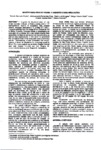Please use this identifier to cite or link to this item:
http://www.alice.cnptia.embrapa.br/alice/handle/doc/840961| Title: | Regiões para trigo no Brasil: o ambiente e suas implicações. |
| Authors: | CUNHA, G. R. da  PIRES, J. L. F.   SCHEEREN, P. L.   DOTTO, S. R.   MALUF, J. R. T.   PASINATO, A.   |
| Date Issued: | 2005 |
| Citation: | In: CONGRESSO BRASILEIRO DE AGROMETEOROLOGIA, 14., 2005, Campinas. Agrometeorologia, agroclimatologia e agronegócio: anais. Campinas: UNICAMP, 2005. |
| Description: | To guide the recommendation of new wheat varieties in Brazil, a wheat growing zone of 17 homogeneous regions of adaptation was created (MAPA, Instrução Normativa n.º 3, of May 31st, 2001). The zone extends from the states of Rio Grande do Sul to Bahia. Currently, Embrapa Wheat is coordinating an evaluation of a proposal for a new wheat growing zone accounting for regional and ecological characteristics as well as crop requirements. In this work it is presented the conceptual base of the study and some preliminary results. Summarizing, it was delineated four macro-regions in terms of adaptation for cultivating wheat in Brazil. The macro-regions are as follow: Region I-humid and cold; Region II-humid and hot; Region III: moderately hot and dry; and Region IV: hot and dry. |
| Thesagro: | Clima |
| Type of Material: | Artigo de periódico |
| Access: | openAccess |
| Appears in Collections: | Artigo em periódico indexado (CNPT)  |
Files in This Item:
| File | Description | Size | Format | |
|---|---|---|---|---|
| SP15240.pdf | 1,56 MB | Adobe PDF |  View/Open |









